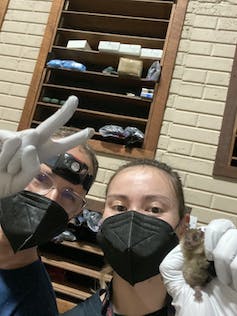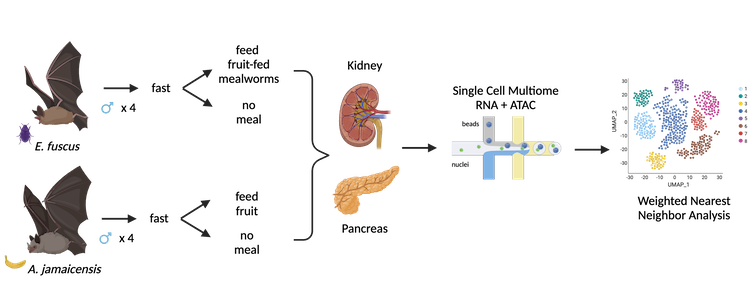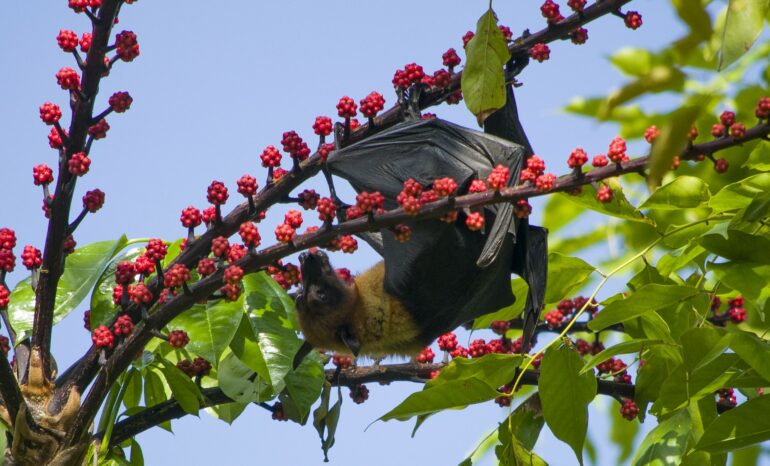People around the world eat too much sugar. When the body is unable to process sugar effectively, leading to excess glucose in the blood, this can result in diabetes. According to the World Health Organization, diabetes became the ninth leading cause of death in 2019.
Humans are not the only mammals that love sugar. Fruit bats do, too, eating up to twice their body weight in sugary fruit a day. However, unlike humans, fruit bats thrive on a sugar-rich diet. They can lower their blood sugar faster than bats that rely on insects as their main food source.
We are a team of biologists and bioengineers. Determining how fruit bats evolved to specialize on a high-sugar diet sent us on a quest to approach diabetes therapy from an unusual angle – one that sent us all the way to Lamanai, Belize, for the Belize Bat-a-thon, an annual gathering where researchers collect and study bats.

Authors Nadav Ahituv, left, and Wei Gordon.
Wei Gordon, CC BY-ND
In our newly published research in Nature Communications, we and colleagues Seungbyn Baek and Martin Hemberg used a technology that analyzes the DNA of individual cells to compare the unique metabolic instructions encoded in the genome of the Jamaican fruit bat, Artibeus jamaicensis, with those in the genome of the insect-eating big brown bat, Eptesicus fuscus.
Approximately 2% of DNA is composed of genes, which are segments of DNA that contain the instructions cells use to create certain traits, such as a longer tongue in fruit bats. The other 98% are segments of DNA that regulate genes and determine the presence and absence of the traits they encode.
To understand how fruit bats evolved to consume so much sugar, we wanted to identify the genetic and cellular differences between bats that eat fruit and bats that eat insects. Specifically, we looked at the genes, regulatory DNA and cell types in two significant organs involved in metabolic disease: the pancreas and the kidney.

This flowchart outlines the authors’ study methodology.
Wei Gordon, created with BioRender.com/Nature Communications, CC BY-ND
The pancreas regulates blood sugar and appetite by secreting hormones like insulin, which lowers your blood sugar, and glucagon, which raises your blood sugar. We found Jamaican fruit bats have more insulin-producing and glucagon-producing cells than big brown bats, along with regulatory DNA that primes fruit bat pancreatic cells to initiate production of insulin and glucagon. Together these two hormones work to keep blood sugar levels balanced even when the fruit bats are eating large amounts of sugar.
The kidney filters metabolic waste from the blood, maintains water and salt balance and regulates blood pressure. Fruit bat kidneys need to be equipped to remove from their bloodstreams the large amounts of water that come from fruit while retaining the low amounts of salt in fruit. We found Jamaican fruit bats have…



